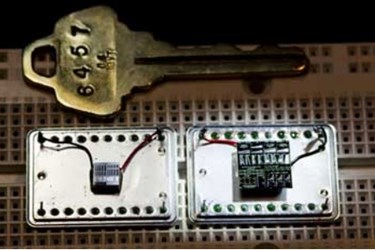New NIST Measurement Tool Is On Target For The Fast-Growing MEMS Industry

As markets for miniature, hybrid machines known as MEMS grow and diversify, the National Institute of Standards and Technology (NIST) has introduced a long-awaited measurement tool that will help growing numbers of device designers, manufacturers and customers to see eye to eye on eight dimensional and material property measurements that are key to device performance.
The NIST-developed test chips (Reference Materials 8096 and 8097) are quality assurance tools that enable accurate, reliable comparisons of measurements on MEMS (Micro Electro Mechanical Systems) devices made with different equipment and by different labs or companies. These capabilities will make it easier to characterize and troubleshoot processes, calibrate instruments and communicate among partners.
MEMS were once considered a stepchild of the semiconductor industry and largely confined to automotive uses—primarily as accelerometers in airbag systems. But the devices have branched out into an array of applications, especially in consumer electronics markets. A high-end smart phone, for example, contains about 10 such devices, including microphones, accelerometers and gyroscopes. MEMS devices also are important components of tablet computers, game consoles, lab-on-a-chip diagnostic systems, displays and implantable medical devices.
Global MEMS industry revenues are projected to grow from about $10B in 2011 to $21B in 2017, according to the June 2012 forecast by the technology consulting firm Yole Development.
Widely used reference materials and standardized measurement methods can help to improve process efficiency and to reduce the cost and time devoted to testing and inspecting MEMS devices. Industry-accepted measurements also can promote greater interoperability among devices made by different manufacturers.
The new NIST reference materials are micro machined and further processed to contain miniature cantilevers, beams, stair-like step heights, micro scale rulers and test structures for measuring surface-layer thickness. Specifically, the NIST test chips can be used to check customer conformity with internationally established standards for measuring elasticity (Young’s modulus), residual strain (and stress), strain (and stress) gradient, as well as thickness, step height and length. All dimensional and material-property measurements that NIST used to characterize the reference devices conform with SEMI and ASTM International standard test methods. These standard methods are consensus best practices developed by industry committees.
“Reference materials and best-practice test methods provide industry-wide benefits,” explains NIST electronics engineer Janet Cassard. “Typically, these tools are prohibitively expensive for a single company to develop on its own. We will work with the MEMS community to facilitate widespread adoption and consistent usage of these standard test methods and reference materials.” For more information, visit http://www.nist.gov/srm/index.cfm.
Source: National Institute of Standards and Technology (NIST)
